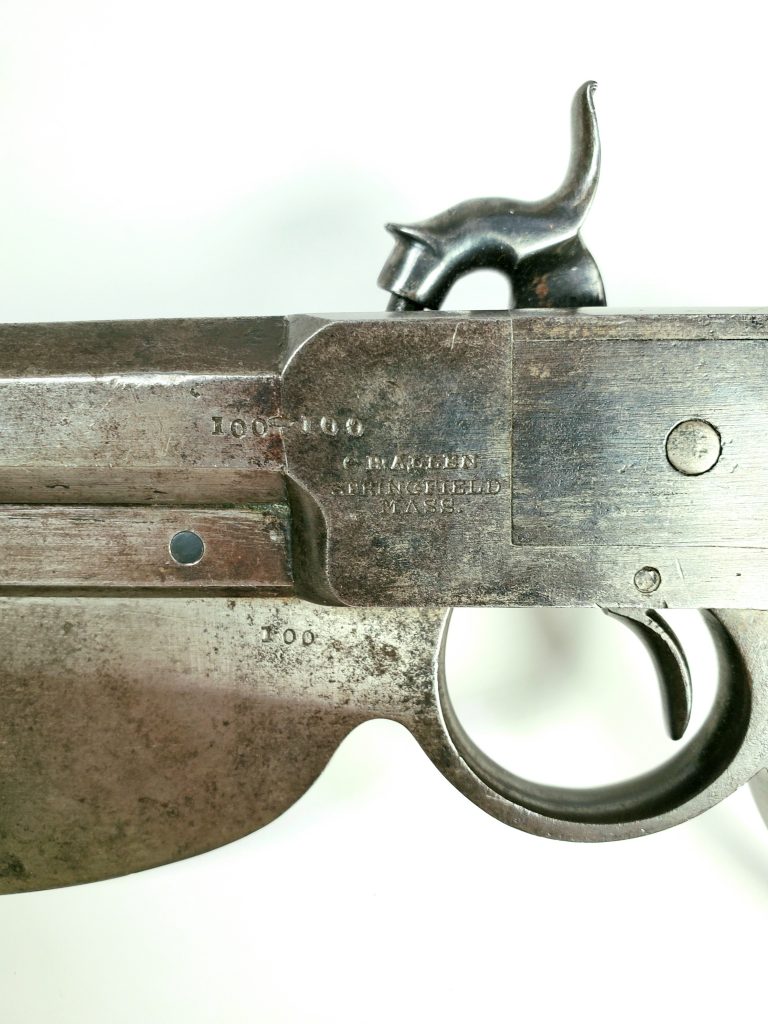A few weeks ago, I talked about martial pistols and the progression of firing mechanisms from the late-18th century to the mid-19th century. While the basics of the guns were the same, a lock, stock, and barrel, the flintlock had become old technology. The percussion ignition was the latest in firearms technology being more waterproof in wet conditions as well as more likely to go off at all because of the percussion cap. Most of the guns, flint or percussion, look very similar with minor variations in details and form. But there was one pistol in the early 19th century that did not look at all like any other.

It was the U.S. Navy Elgin Cutlass Pistol. It came into use circa 1838 though not in large numbers as only 150 were ever produced for the navy. There are some variants made for civilian use that are also extremely rare, but they do not hold the same value as the military version. It is an awkward looking thing with a long wooden grip with a steel back strap for strength, a knuckle bow similar to a Bowie knife or sword, and trigger guard that is one piece and connected to the large knife-like blade mounted under the barrel. It had a percussion ignition system which was its first use by the United States military. It also has an octagonal barrel which is of .52 caliber. In our period we think of that as huge bore for a pistol but was quite common in the 18th and 19th century. At 2 ½ pounds it is not all that heavy, but the weight of the blade on the front makes the gun a little nose heavy and hard to aim.
The gun was patented by George Elgin and produced by Cyrus B. Allen of Springfield, Massachusetts with the cutlass-style blade being made by the N.P. Ames company, also of Springfield. Ames was famous for their sword and blade production, so the partnership makes a lot of sense if building an arm of this type with a large blade.
It was the only combination gun/knife produced for the military use of the United States and saw some limited use. They were, however, issued for use during the Wilkes-South Sea Exploring Expedition between 1838 and 1842. This expedition was for surveying and collecting information in the South Sea that was previously unknown. During the expedition when landing parties went ashore there were frequent battles with Pacific island natives and men on both sides were killed.
Although today this Bowie-knife looking pistol is a little strange, it must have been quite imposing and scary to some of the island Natives when confronted with it.




